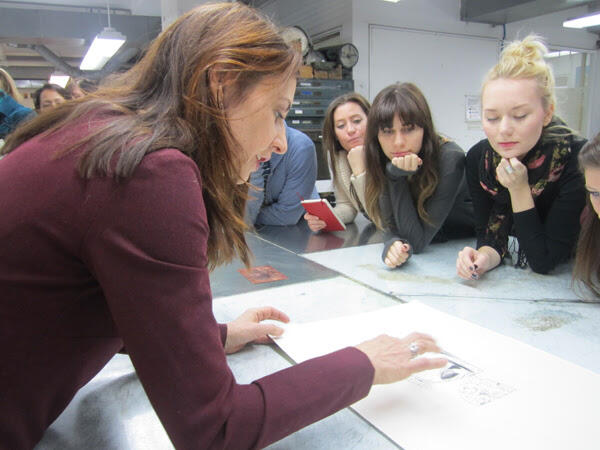Christie’s Offers New Master’s Degree In Global Contemporary Art
In September 2014, Christie’s Education New York will launch a unique new master’s degree program called “Global Contemporary Art,” focused on preparing students for careers in the constantly evolving contemporary art marketplace.

This 15-month program takes a multidisciplinary and in-depth look at the cultural, socio-economic and market forces that shape today’s global art scene.
Through a tightly structured series of classroom instruction, field visits and an internship, the program will give students the practical and conceptual tools as well as the hands-on experience required to understand the complexity of the global art market from 1980 to the present day. Studies are organized thematically, rather than geographically, reflecting the cross-pollination of ideas and influences shaping today’s art world, with a major focus on non-Western contemporary art from South America, Asia and Africa and how it engages with and confronts contemporary art practices in the more-established arts scene. The courses will emphasize the interface between institutional networks and commercial art markets, as well as recent digital technology and social platforms and their impact on contemporary artistic production on all continents.
The program welcomes students from various backgrounds who have either a BA in art history or comparable professional experience in the art world. The small student-teacher ratio enables students to work closely with knowledgeable professors and highly regarded art experts, as well as with one another, to focus on mastering professional art world skills. Students will acquire a critical approach to global contemporary art that explores how new forms of artistic production engage with and challenge more established art structures. At the same time, they will closely study contemporary exhibitions and art fairs, conservation and collection practices, and relevant legal and insurance issues.
Students will directly engage with the artistic methods and procedures used today, and have individual contact with active art world professionals to examine up close the global art market’s relationship to the creative process. Special consideration will be given to the changing dynamics between the artist and the collector. A few of the highlights include:
Exhibiting, Archiving and Preserving Contemporary Art in the Global Context: A hands-on examination of the changing role and function of curators, as well as an analysis of newly emerging collecting patterns and display strategies in modern and contemporary institutions.
Global Culture, Economics and the Art Market: An examination of the structure of the global art market and the history behind contemporary art fairs and biennials, including how new technologies and digital platforms have transformed the global economy, along with the formation of new identities tied to specific geographies.
Glocal: Finding the Global in New York: This course familiarizes the student with the contemporary art world in New York and to the various ways that New York accommodates a vision of global contemporary art.
Curatorial Workshop: Through a combination of class discussion, site visits and panel discussions, students will learn to write an exhibition catalogue for a biennial to sharpen their analytic and evaluative skills.
Field Studies: Students visit New York art institutions, including auction house sales, museums, artist studios, conservation labs, private collections and galleries.
Internship: A 45-day full-time internship in the fall term of the second year, with a choice among Christie’s auction house, commercial galleries, nonprofit art institutions, museums and elsewhere.







